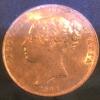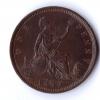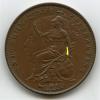Ian was very lucky with this coin in that there was a remarkably good surface preserved under the verdigris (green areas) and under the oxide (brown areas). Held to the light, the field almost prooflike, and had I stripped the whole coin to a reactive surface and then evenly toned , this sheen would have been lost so I decided to tone through the existing, which could be taken further over time.
When I first saw the coin the verd looked almost waxy, and I wondered whether there was an organic element, so I tried a couple of organic solvents - acetone, DMSO, petrol- which had no effect on the verd but did at least remove any contaminants that might have blocked the verdicare.
Under the microscope it was clear that all the discoloured areas of the coin has experienced corrosion, being both very hard and adherent. Working each side sequentially, reverse first, it took about a day of Verdicare to start to soften the corrosion and enable a gentle picking off with the needle, in tiny plaques; I had to take this very slowly in sessions of an hour or so, microscope work is hard on the eyes and neck. I suspect it took 15 to 20 hours of microscope time. The fields were mostly done with the polished tip steel needle, he detail particularly the denticles with an orange needle on insulin syringe (courtesy of our late diabetic cat). I was always working through a thin layer of Verdicare. A very steady hand is needed, and pressure on the verd rather than the coin. There was a good cleavage plane of reddish oxide on the surface of the coin, which helped a lot.
My feeling is that the coin, while not perfect of course, has come out better than I expected
Jerry
 Coinpublications.com
Coinpublications.com






